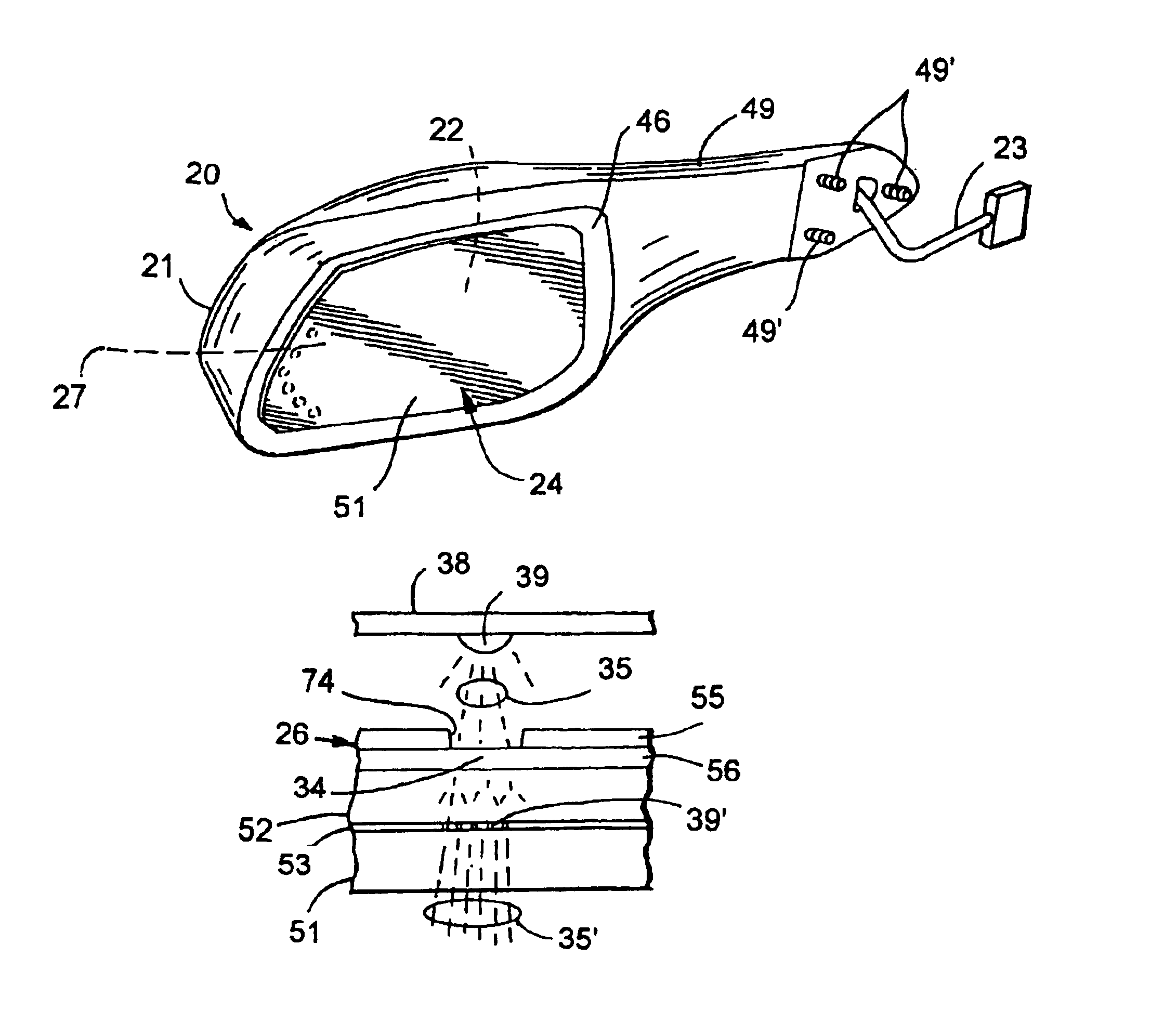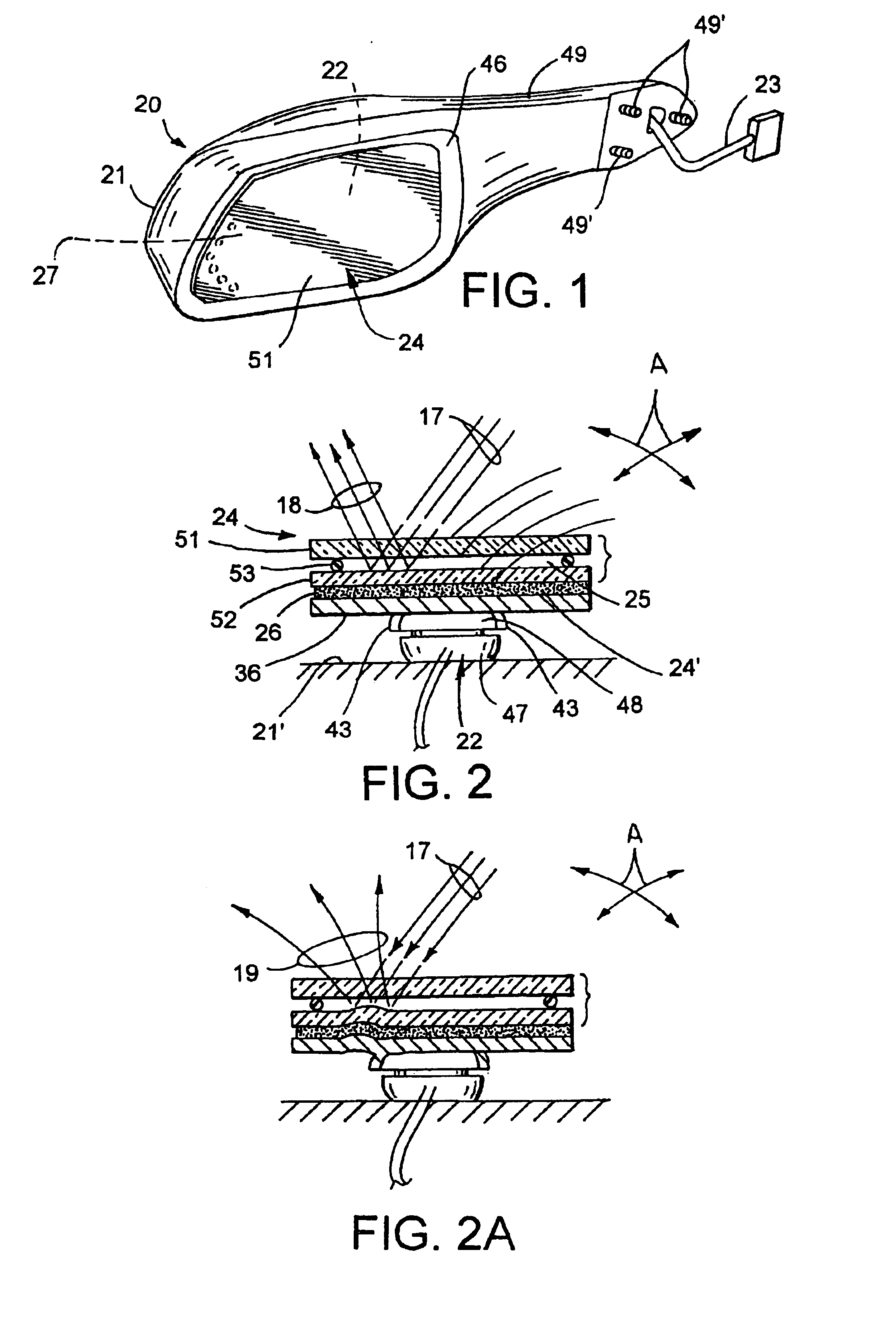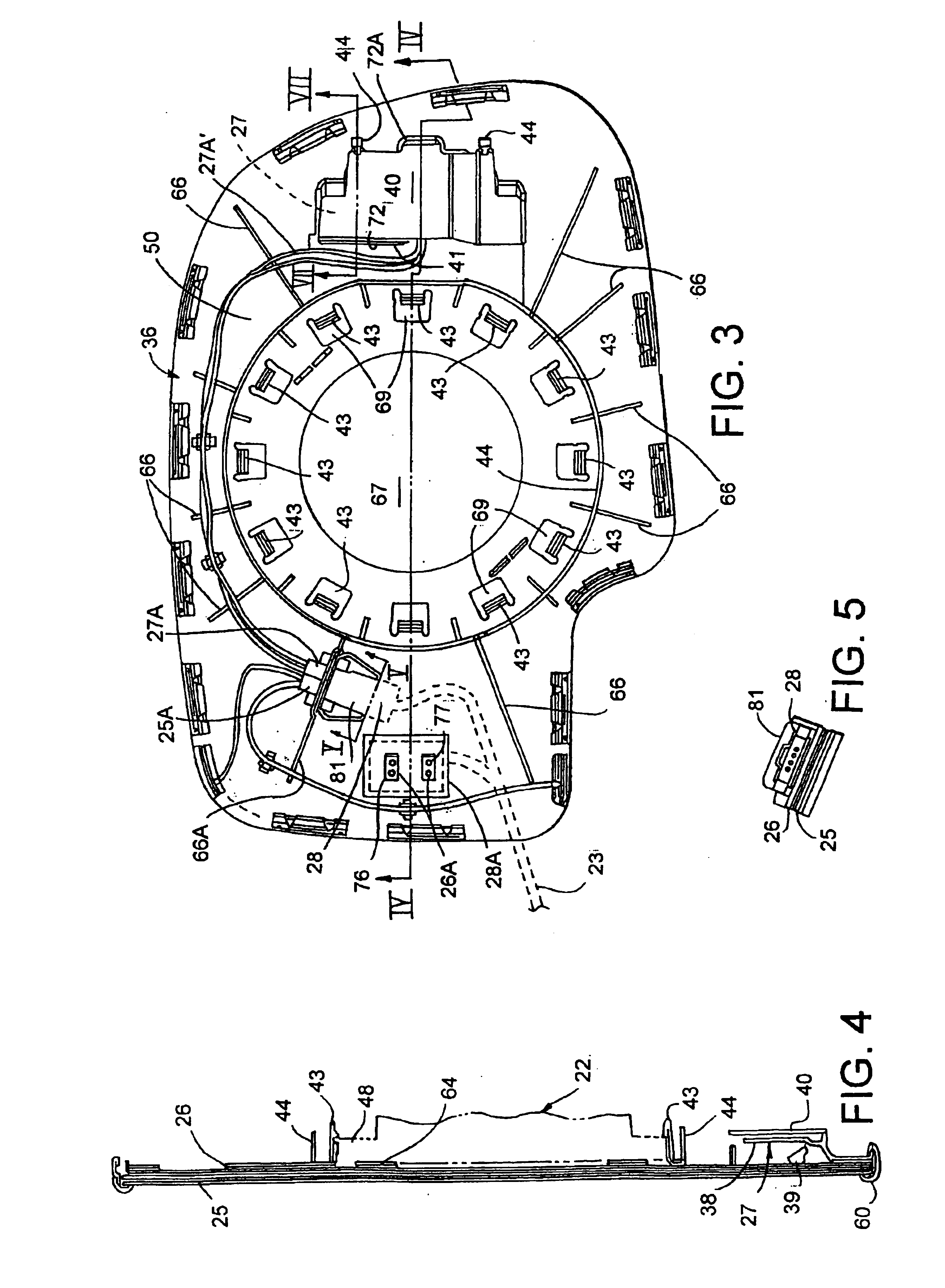Rearview mirror constructed for efficient assembly
a rearview mirror and efficient technology, applied in the field of rearview mirrors, can solve the problems of distortion of reflected images, occupying considerable space, and increasing the order of mirrors
- Summary
- Abstract
- Description
- Claims
- Application Information
AI Technical Summary
Benefits of technology
Problems solved by technology
Method used
Image
Examples
Embodiment Construction
[0046]The illustrated mirror assembly 20 (FIG. 1) includes a housing 21, an angular electrically-powered adjustment mechanism 22 (called a “power pack” herein) (FIG. 2) supported in and attached to a wall 21′ in the housing 21, and main wiring bundle 23 (FIG. 1) for powering and controlling the power pack 22 and the other components in the mirror assembly 20. An electrochromic mirror subassembly 24 (FIG. 2) includes a carrier 36 snappingly attached to a multi-angularly-adjustable plate 48 on the power pack 22 in a manner that minimizes stress on the glass elements of the mirror subassembly 24, as described below. The present mirror assembly 20 is designed to prevent the problem illustrated in FIG. 2A, where resilient fingers on the carrier are stressed and have caused a deformation on the glass elements of the mirror subassembly, resulting in unacceptable distortion of reflected images, as represented by non-parallel reflected light beams 19. (Compare with FIG. 2, where three light ...
PUM
| Property | Measurement | Unit |
|---|---|---|
| force | aaaaa | aaaaa |
| electrochromic | aaaaa | aaaaa |
| area | aaaaa | aaaaa |
Abstract
Description
Claims
Application Information
 Login to View More
Login to View More - R&D
- Intellectual Property
- Life Sciences
- Materials
- Tech Scout
- Unparalleled Data Quality
- Higher Quality Content
- 60% Fewer Hallucinations
Browse by: Latest US Patents, China's latest patents, Technical Efficacy Thesaurus, Application Domain, Technology Topic, Popular Technical Reports.
© 2025 PatSnap. All rights reserved.Legal|Privacy policy|Modern Slavery Act Transparency Statement|Sitemap|About US| Contact US: help@patsnap.com



